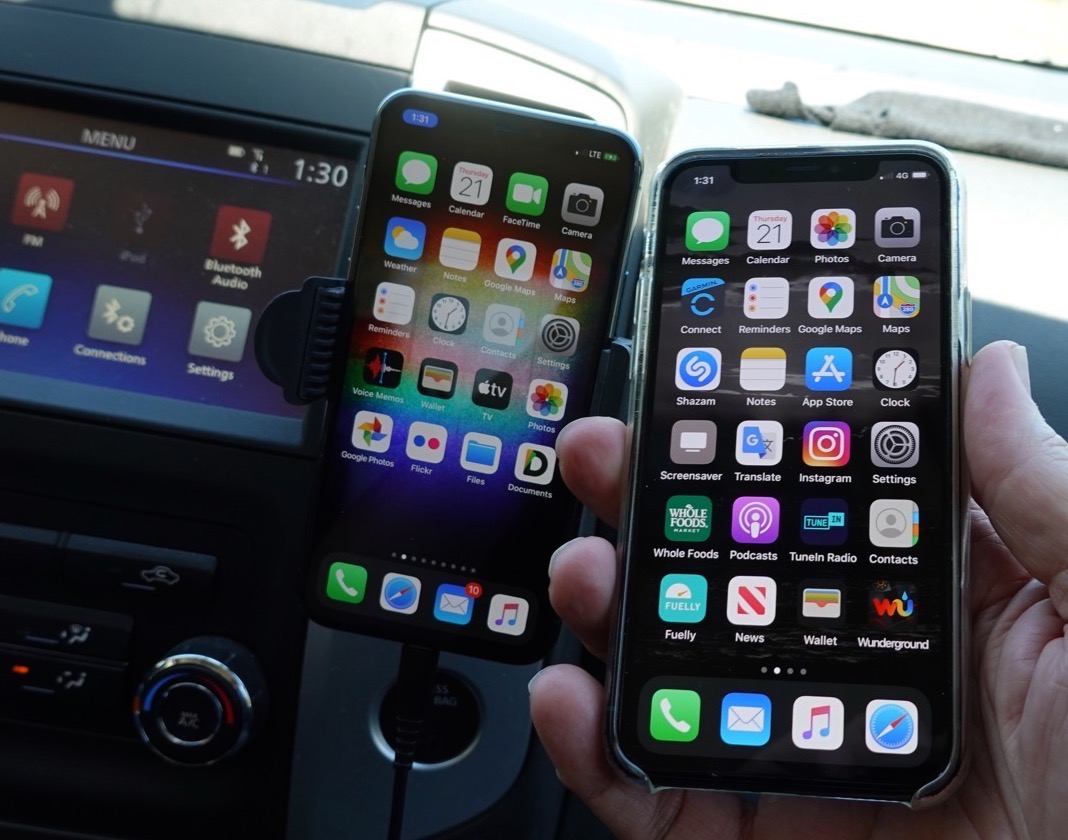Data out on the land.
Thursday, May 21st, 2020

People who live in rural areas are discovering in our new be-at-home, family-be-with-you-at-home reality that the choice of which cell provider you have can make a difference in the quality of data. Quality as in “is it fast and abundant?”
And beyond the big three or so, if you have a cell provider that is reselling service from one of the U.S. big folks (AT&T, Verizon, T-Mobile) they may have great deals on data, but in the tiny type it may say that during times of high usage on a particular cell tower, you may be ‘deprioritized,’ which is a polite sounding way of saying your data speeds, specifically, your download speeds, will be throttled down to those of a bygone era. You will be put in line behind those with more premium plans from the big three themselves, and thus you will get data crumbs, not all-you-can-eat richness.
For a variety of reasons, Sammy and I have nearly identical iPhones with two different providers, AT&T (prepaid) and a service named Visible, which is fully owned by Verizon. The latter service is strong at our little cottage in the Upper Peninsula, until too many users cram onto the solitary cell tower we all share, and wammo, download speeds plummet. The former has a weaker signal overall where we want to use it, but it’s, as far as we know, never deprioritized.
If you live in a place like this and want to be sure that first of all you can even ‘see’ (pick up the signal of) at least one of a certain company’s cell tower, what do you do? (Say, for example, you’re a new phone owner and want to pick a carrier.) Well, the companies will tell you they have these great coverage maps. These maps are of course, wildly optimistic and wildly vague and they don’t show you where the towers precisely are, and even if you spot a tower, it’s probably owned by a tower-owning company who is leasing space on it to one of the big three, and that information (which towers are hosting who) should in a just version of the United States, be easy to access from, say, the Federal Communications Commission, because we are talking about radio signals and transmission towers here, but…sadly, no, it’s treated as proprietary corporate information. Just look at these fine colorful vague maps again!
So sometimes when we’re in an area we can at least do a reliable comparison between our two phones, side by side, as we drive through rural places. Some places: “ah, strong Verizon LTE.” Others: “I think the AT&T’s stronger, two bars…wait, dropping to one.”
Some of the places we thought we knew well are definitely, post-Coronavirus, suffering the effects of too many people at home trying to eke what they can out of overburdened towers.
Which makes me want to run the FCC, take it over, and mandate more reasonably-priced, LTE signal for more rural areas, and an end to deprioritization. Connect as many as you can, but don’t make some take a back seat to others. Things getting clogged? Incentivize building new towers or adding new transmitters on existing towers, fast. Let’s have clear data on how many people can use tower X serving community Y at the same time.
In these times in rural America, it’s not just for fun and games. It’s a lifeline.

